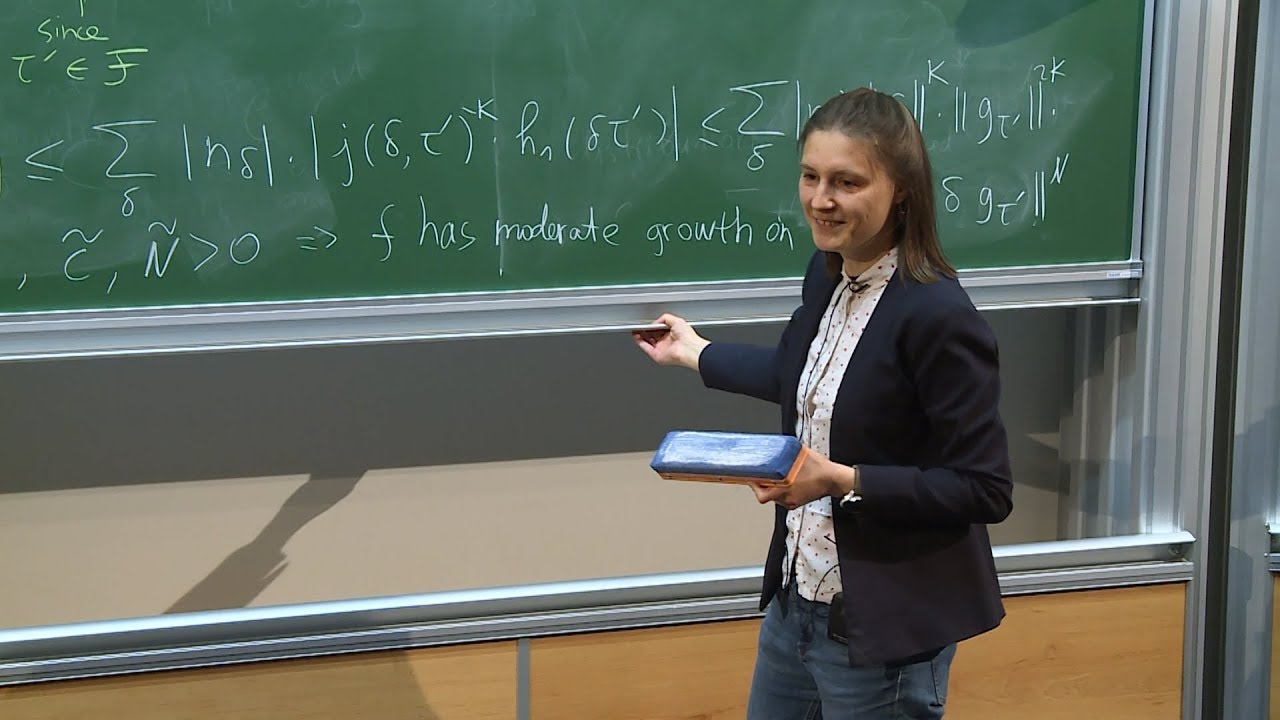
Ukrainian number theorist Maryna Viazovska is among the four winners of the 2022 Fields Medals, one of the highest honours in mathematics that is conventionally awarded to people aged under 40. The other winners are James Maynard, a number theorist at the University of Oxford, UK; June Huh, a specialist in combinatorics at Princeton University in New Jersey; and Hugo Duminil-Copin, who studies statistical physics at the Institute of Advanced Scientific Studies (IHES) near Paris. The International Mathematical Union (IMU) announced the winners at an award ceremony in Helsinki on 5 July.
Maryna Viazovska who is now a professor at the Swiss Federal Institute of Technology in Lausanne, is known for proofs for higher-dimensional equivalents of the stacking of equal- sized spheres. She is also only the second woman ever to win the Fields Medal.
Of the 60 mathematicians who won Fields Medals before this year, 59 were men. In 2014, a Stanford mathematician, Maryam Mirzakhani, was the first and, until now, the only woman to receive one.
“I feel sad that I’m only the second woman,” Dr. Viazovska said. “But why is that? I don’t know. I hope it will change in the future.”
Dr. Viazovska’s work is a variation of a conjecture by Johannes Kepler more than 400 years ago. Kepler is best known for realizing that the planets move around the sun in elliptical orbits, but he also considered the stacking of cannonballs, asserting that the usual pyramid stacking was the densest way that they could arranged, filling up just under 75 percent of the available space.
Kepler could not prove that statement, however. Neither could anyone else until Thomas Hales, then at the University of Michigan, succeeded in 1998 with a 250-page proof and, controversially, the help of a computer program.
Proving something similar for the packing of equal-size spheres in dimensions higher than three has been impossible so far — with a couple of exceptions.
In 2016, Dr. Viazovska found the answer in eight dimensions, showing that a particularly symmetric packing structure known as E8 was the best possible, filling about one-quarter of the volume. Within a week, she and four other mathematicians showed that a different arrangement known as the Leech lattice was the best possible packing in 24 dimensions. In high dimensions, the filled volume is not very full, with the Leech lattice of 24-dimensional spheres occupying about 0.2 percent of the volume.
What’s so special about eight and 24 dimensions?
“I think that’s a mystery,” Dr. Viazovska said. “It’s just in these dimensions, certain things happen which don’t happen in other dimensions.”
She said that a method that generally gives an upper bound on the packing density turns out to be the exact solution in these cases.
High-dimensional sphere packings are related to the error-correcting techniques used to fix garbles in the transmission of information.
She said that the Russian invasion of Ukraine had taken its toll on her family. “It’s very difficult,” she said.
Her parents still live near Kyiv, Dr. Viazovska said, while her sisters, nephew and niece left and joined her in Switzerland.